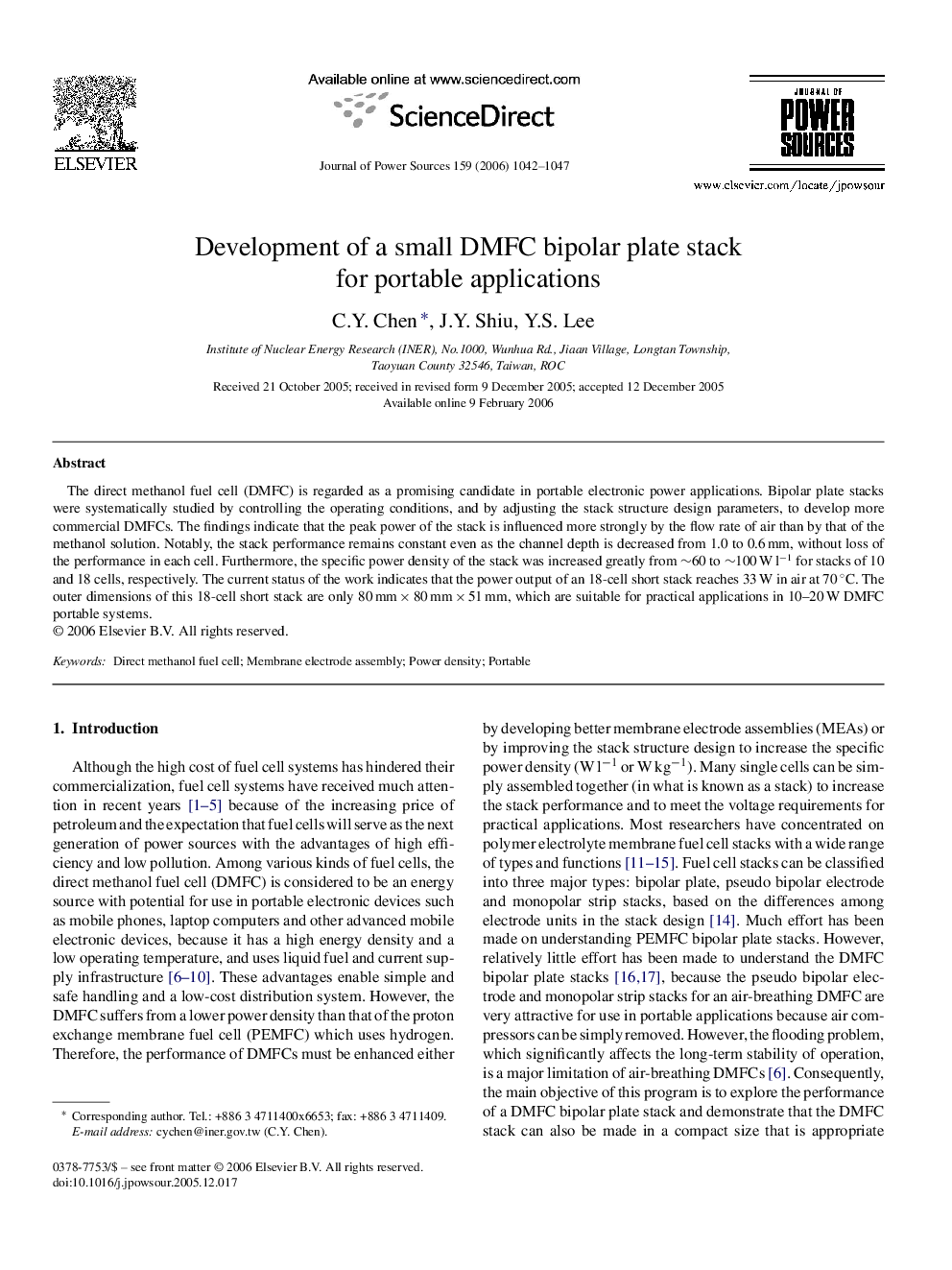| Article ID | Journal | Published Year | Pages | File Type |
|---|---|---|---|---|
| 1287257 | Journal of Power Sources | 2006 | 6 Pages |
The direct methanol fuel cell (DMFC) is regarded as a promising candidate in portable electronic power applications. Bipolar plate stacks were systematically studied by controlling the operating conditions, and by adjusting the stack structure design parameters, to develop more commercial DMFCs. The findings indicate that the peak power of the stack is influenced more strongly by the flow rate of air than by that of the methanol solution. Notably, the stack performance remains constant even as the channel depth is decreased from 1.0 to 0.6 mm, without loss of the performance in each cell. Furthermore, the specific power density of the stack was increased greatly from ∼60 to ∼100 W l−1 for stacks of 10 and 18 cells, respectively. The current status of the work indicates that the power output of an 18-cell short stack reaches 33 W in air at 70 °C. The outer dimensions of this 18-cell short stack are only 80 mm × 80 mm × 51 mm, which are suitable for practical applications in 10–20 W DMFC portable systems.
